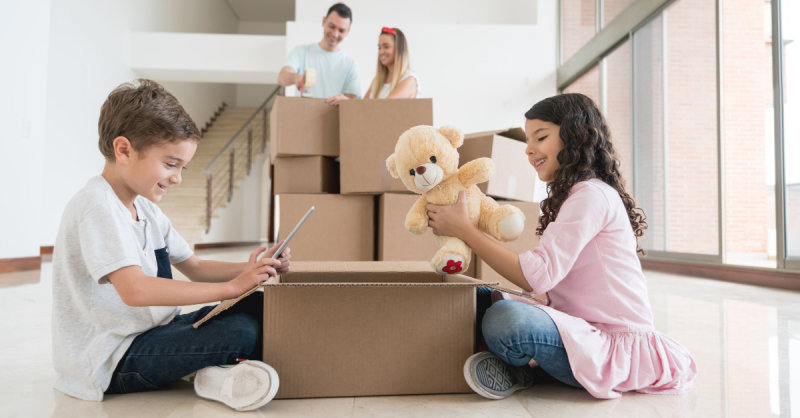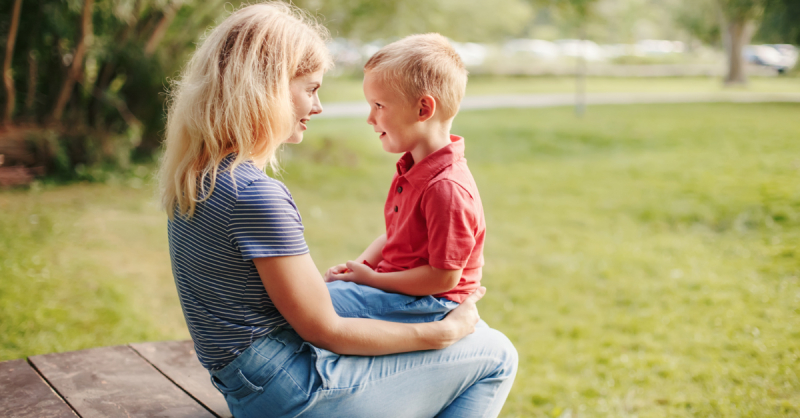Moving to a new home is a significant life event, marked by excitement, anticipation, and sometimes anxiety. However, when young children are part of the equation, the challenges can take on a unique complexity. At Crown Relocations, we’ve been privileged to assist numerous families from the UK and worldwide in making smooth transitions. We’ve witnessed a myriad of concerns, hopes, and dreams that come with relocating, especially when little ones are involved.
In this comprehensive guide, we embark on a journey that delves deep into the art of moving with children. We understand that a move isn’t merely about transporting possessions; it’s about guiding your family through an experience that shapes their future and leaves an indelible mark on their memories.
We believe that involving your children in the process can transform what might be a daunting task into a shared adventure.
It’s about nurturing a sense of anticipation, discovery, and an understanding of change.
In the following sections, we’ll explore each facet:
1. The Initial Preparation: Involving Your Children
Before the moving trucks arrive, preparing your children for the transition is essential. Involving them from the outset can help them adapt more easily to the idea of moving:
- Discuss the Move Openly: Engage your children in conversations about the upcoming move. Listen to their thoughts and concerns while sharing your excitement about the new adventure. This open dialogue fosters trust and emotional support, making the process smoother.
- Create Tangible Memories: Consider making a photo album of happy memories from your home for younger children. Share stories about these moments, creating a sense of closure. Storybooks related to moving day, like “The Berenstain Bears’ Moving Day – Stan & Jan Berenstain” can help explain the upcoming changes in a relatable and comforting way.
- Fun Planning Activities: Encourage your kids to participate in planning. Have them draw pictures or fill out fact sheets about the new home, making the process enjoyable. This not only involves them in the decision-making but also sparks excitement about their new space.
- Virtual Exploration: Use online resources like Google Maps to show them the new local playground, school, and where to find their favourite foods. This helps build excitement and familiarity with the new area, reducing the fear of the unknown.

2. Packing and Familiarity: A Smooth Transition
Packing up your home can be a hectic time, but it’s crucial to keep your children’s comfort in mind. Here are a couple of suggestions listed below that have been successful in the past:
- Pack Their Favourites: Create a special package for your child with their beloved toys, books, clothing, and snacks for moving day. Label it with their name and keep it easily accessible. Having these familiar items on hand can provide a source of comfort during the often chaotic moving process.
- Room Personalization: Allow your children to have a say in how their new room will be decorated. Involving them in setting up their space can provide a sense of ownership and security. Let them choose the colour of the walls, arrange their furniture, and personalize their new space to their liking.
- Treasure Box: Provide your child with a miniature packing box they can decorate with stickers and fill with their favourite possessions. Ensure its small enough to travel with them. This box can serve as a source of emotional security, containing items that hold special meaning and memories from the old home.

3. Adjusting to New Surroundings: Familiarising Your Children with the Area
When moving to a new city or neighbourhood, helping your children become familiar with their surroundings can ease the transition:
- Discover Local Attractions: Research and introduce your child to the exciting places in your new area, such as zoos, parks, and museums. This can pique their interest and build excitement. Create a list of potential outings and let your child choose which ones they’d like to visit first.
- Highlight Differences: If your move takes you to a drastically different environment, ensure your children understand these differences and what to look out for in their new surroundings. It’s an opportunity to educate them about geography, culture, and the uniqueness of their new location.
- Visual Aids: Take photos of the new home, their room, the school, and nearby parks during a visit. Your children will enjoy looking at these pictures, helping them adjust to the idea of moving. Printing out a map of the area and letting them mark it with pens and stickers can make them feel more involved in the decision-making process and familiarise them with their new surroundings.

4. The Importance of School Planning
For families with school-age children, school planning is a critical component of the relocation process. Here’s how to ensure a smooth transition for your child’s education:
- Local vs. International Schools: Consider whether a local or international school is the best fit for your child’s education, taking into account the duration of your stay and language considerations. Local schools can provide opportunities for language immersion and cultural integration, while international schools may offer continuity in curriculum.
- Visit the New School: If possible, visit the new school with your children. This helps them get acquainted with the environment, meet teachers, and understand what to expect. It’s an opportunity for them to see the school as a welcoming and familiar place.
- Choosing the Right Time to Move: Plan your relocation around your children’s education, ideally coinciding with the start of the new school year. This will help them integrate more smoothly into their new school environment and make friends more easily as everyone is starting fresh together.

5. Coping with Challenges: Be Patient and Stay Calm
No matter how well you prepare, moving with children can pose challenges. It’s essential to remain patient and calm throughout the process:
- Expect Adjustment Periods: Understand that children may not settle in immediately, particularly if they have a strong connection to their previous home. This adjustment period is entirely normal, and providing emotional support and reassurance is crucial during this time.
- Embrace the Journey: Remember that the move can ultimately be the best choice your family has ever made. Embrace the adventure and the opportunities it presents. Encourage your children to see this as a chance to learn, grow, and experience new things.

Ready to move? Your Stress-Free Relocation Journey Starts Here
At Crown Relocations, we understand the complexity of moving with children, and our goal is to help you navigate this journey confidently and efficiently, ensuring that your family’s relocation is a positive and rewarding experience for everyone involved.
Contact our expert move managers today for personalized assistance with your family’s relocation plans. Let’s make your move an unforgettable adventure for all the right reasons.